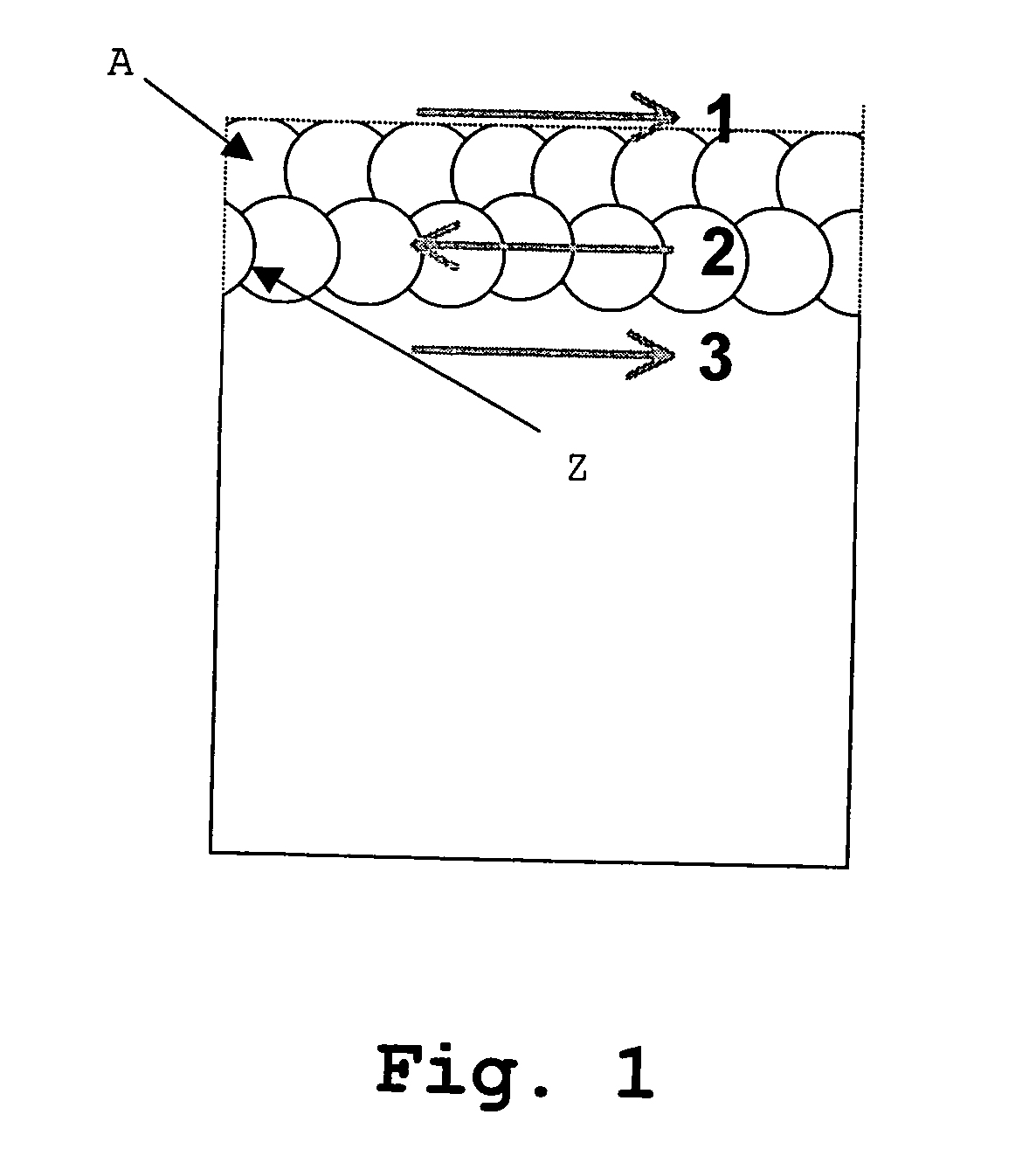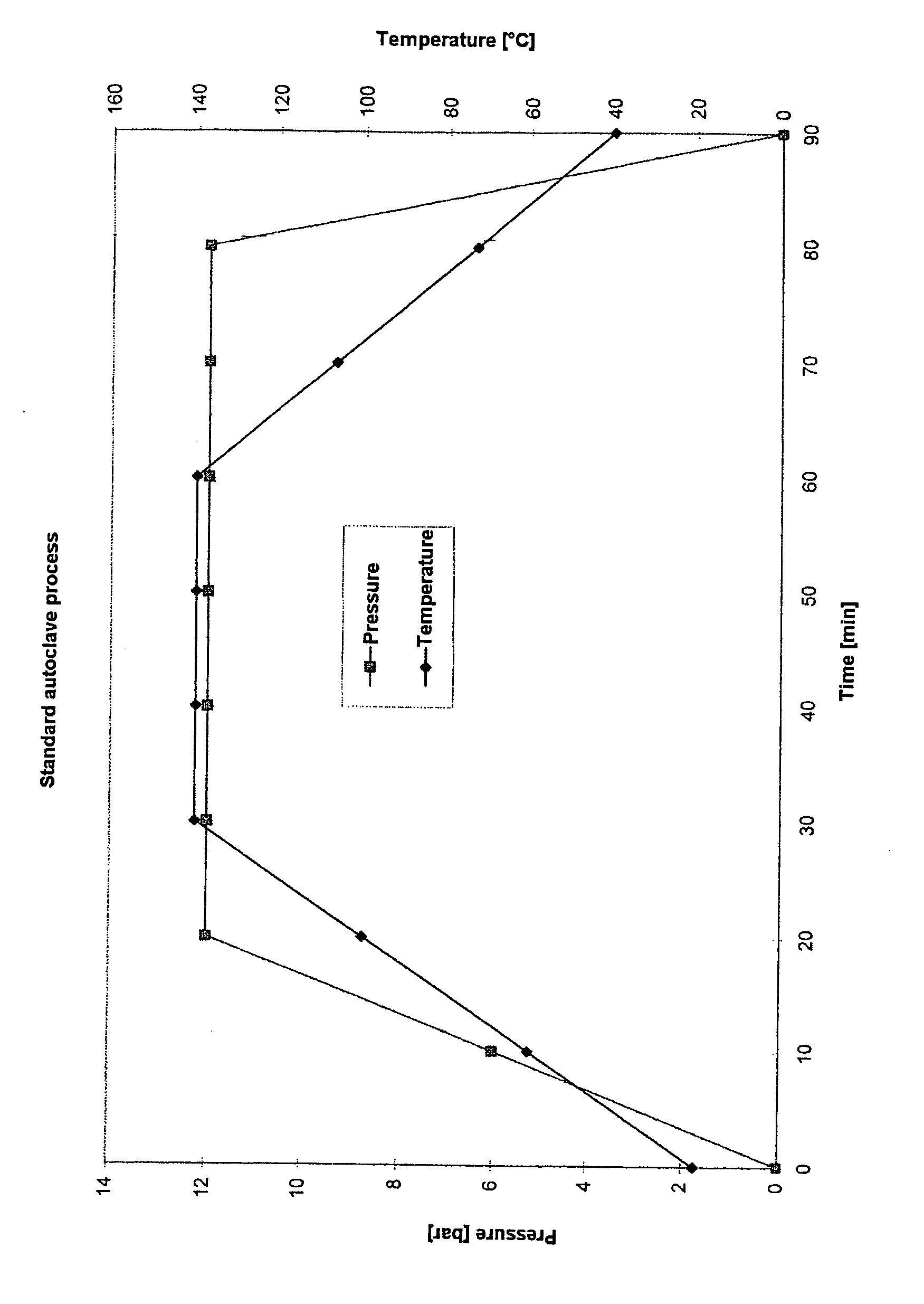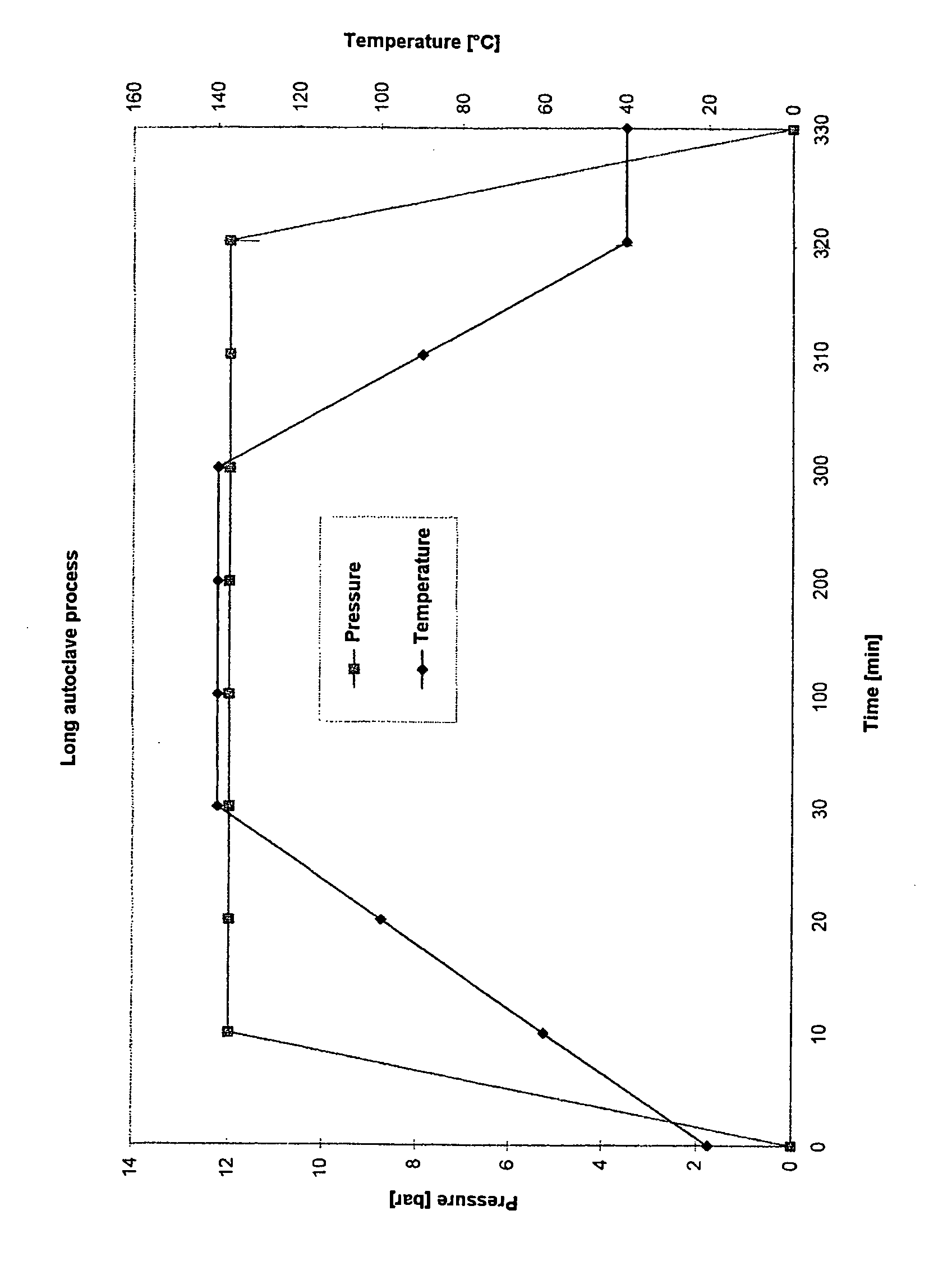PVB Film for Composite Safety Glass and Composite Safety Glass
- Summary
- Abstract
- Description
- Claims
- Application Information
AI Technical Summary
Benefits of technology
Problems solved by technology
Method used
Image
Examples
Embodiment Construction
[0049] For the Inventive Examples 1, 5 and 7, and also the Comparative Examples 2 to 4 and 6, all of which are listed below and shown in Table 2, films of thickness 0.76 mm were first produced in the manner known per se to the person skilled in the art, as in EP 0 185 863 B1. To this end, a mixture of commercially available PVB (Mowital® LP B 68 / 1 SF from Clariant) was homogenized and melted with plasticizer which is likewise commercially available, namely 3G7 in Experiments 1 to 5 and DHA in Experiments 6 and 7, in a single-screw extruder, with a throughput of 160 kg / h, and extruded through a slot tool. After appropriate conditioning, all of the films had the same water content of 0.47% by weight.
[0050] In Example 1, 0.04% by weight of a 30% strength magnesium octanoate solution were added as antiadhesive agent to the parent mixture of 74% by weight of PVB and 26% by weight of the plasticizer 3G7, i.e. 0.12 g of magnesium octanoate were used for 1 kg of film mixture. 0.15% by weig...
PUM
| Property | Measurement | Unit |
|---|---|---|
| Temperature | aaaaa | aaaaa |
| Percent by mass | aaaaa | aaaaa |
| Percent by mass | aaaaa | aaaaa |
Abstract
Description
Claims
Application Information
 Login to View More
Login to View More - R&D
- Intellectual Property
- Life Sciences
- Materials
- Tech Scout
- Unparalleled Data Quality
- Higher Quality Content
- 60% Fewer Hallucinations
Browse by: Latest US Patents, China's latest patents, Technical Efficacy Thesaurus, Application Domain, Technology Topic, Popular Technical Reports.
© 2025 PatSnap. All rights reserved.Legal|Privacy policy|Modern Slavery Act Transparency Statement|Sitemap|About US| Contact US: help@patsnap.com



